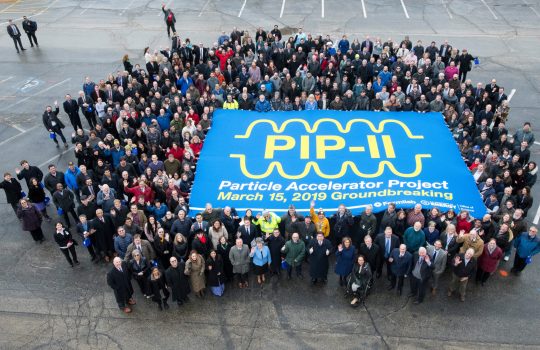‘Why anything?’: Fermilab scientists ask the universe’s biggest question in study of a tiny particle
From NPR’s Here & Now, March 19, 2019: Fermilab is a global center for research into a tiny particle that could help answer some of the biggest questions in physics: the neutrino. Neutrinos have no electrical charge and almost no mass, but they’re everywhere. Fermilab Director Nigel Lockyer and Fermilab Deputy Chief Research Officer Bonnie Fleming talk about the Deep Underground Neutrino Experiment, visit the NOvA experiment and discuss the benefits of fundamental research.

